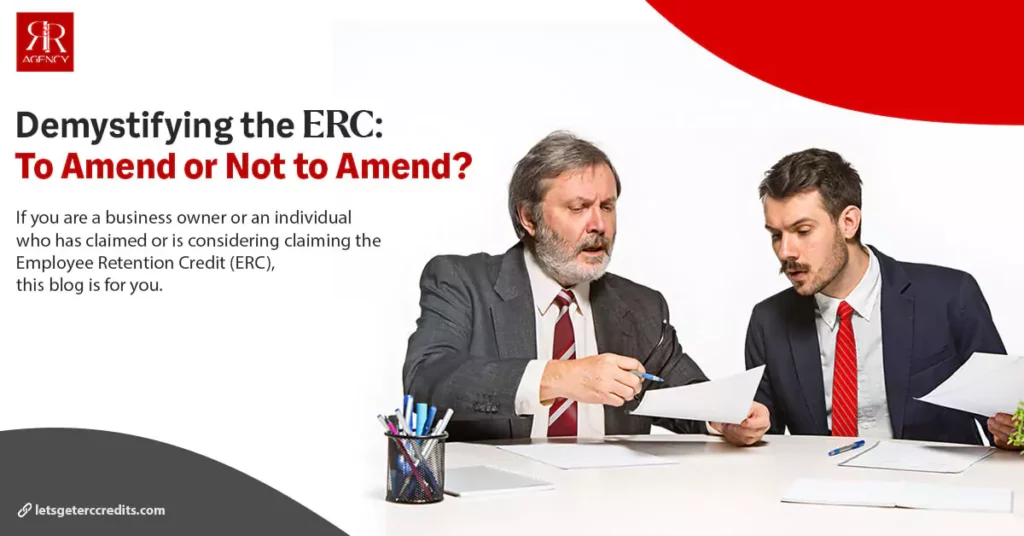If you are a business owner or an individual who has claimed or is considering claiming the Employee Retention Credit (ERC), this blog is for you.
If you are a business owner and wonder if you have to amend your tax returns for ERC, you have entered the realm of tax complexities that often leaves taxpayers needing clarification about what’s going on and scratching their heads in confusion.
This engaging blog tackles a burning question: Do you have to amend your tax return for ERC credit? But fear not! We’re here to unravel the mystery and provide the necessary clarity.
The employee retention credit (ERC) has been a crucial lifeline for businesses navigating the turbulent waters of the COVID-19 pandemic, offering financial relief and support. However, understanding the complexity of claiming credit and determining if an amendment is required can take time and effort.
LEARN MORE: Are ERC credits taxable?
Key Takeaway
- We aim to equip you with the knowledge and insights necessary to make informed decisions and avail of maximum eligible tax benefits. All that is done while ensuring compliance with the ever-evolving tax landscape.
- We will delve into the nuances of the ERC throughout this blog, explore various scenarios, and present you with top-notch expert guidance.
- You will understand how to amend your tax return for ERC credit, fill out various forms, report ERC on tax returns, and other important questions related to ERC.
- By the time you reach the end of this blog, you’ll have a clear understanding of whether amending your tax return for ERC credit is necessary and how to proceed.
So, let’s dive into this enlightening journey together, demystifying the complexities of the ERC and ensuring you make the most informed decisions for your financial well-being.
Do You Have To Amend Your Tax Return For ERC Credit?
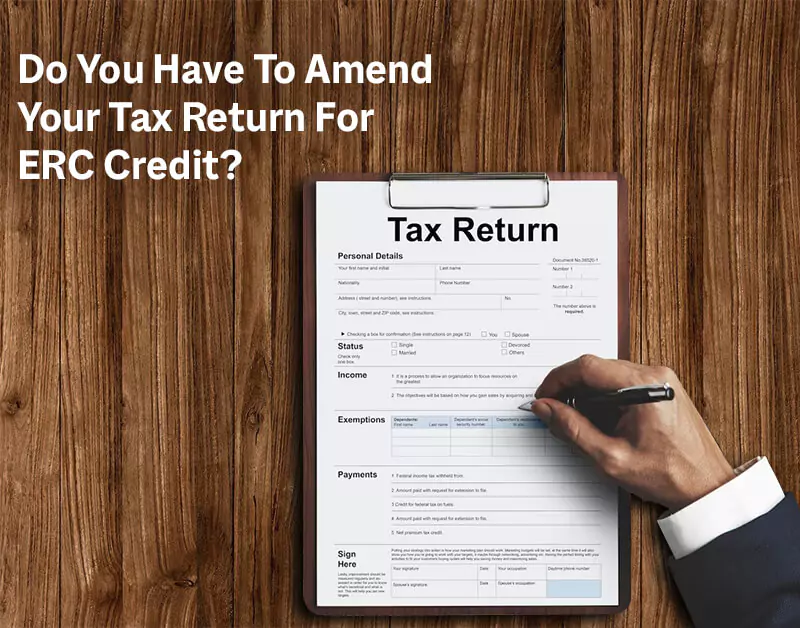
People who have already filed for tax returns and later discover they are eligible for the Employee Retention Credit (ERC) wonder whether they need to amend their tax returns. The answer to this question would depend on various factors, including the timing of your discovery and the options available.
If you have already filed your tax return and have yet to claim the ERC, you may need to file an amended tax return to include the credit. An amended return, usually Form 1040-X, allows you to correct any errors or omissions on your original return.
By amending your return, you can claim the ERC and potentially receive a refund or reduce your tax liability. The decision to amend your tax return depends on the specific circumstances. The IRS has guided taxpayers who wish to claim the ERC retroactively for eligible quarters in 2020 or 2021.
You can claim the credit on your current year’s tax return without filing an amended return by following the instructions provided by the IRS.
The rules and regulations surrounding the ERC can change, so it’s critical to stay updated with the latest information from the IRS or consult with a tax professional so that they help you determine the best course of action based on your situation.
Remember to keep accurate records and documentation to support your claim for the ERC. This includes information related to the eligible quarters, qualified wages, and any other requirements outlined by the IRS.
How To File Amended 941 For ERC Credit?
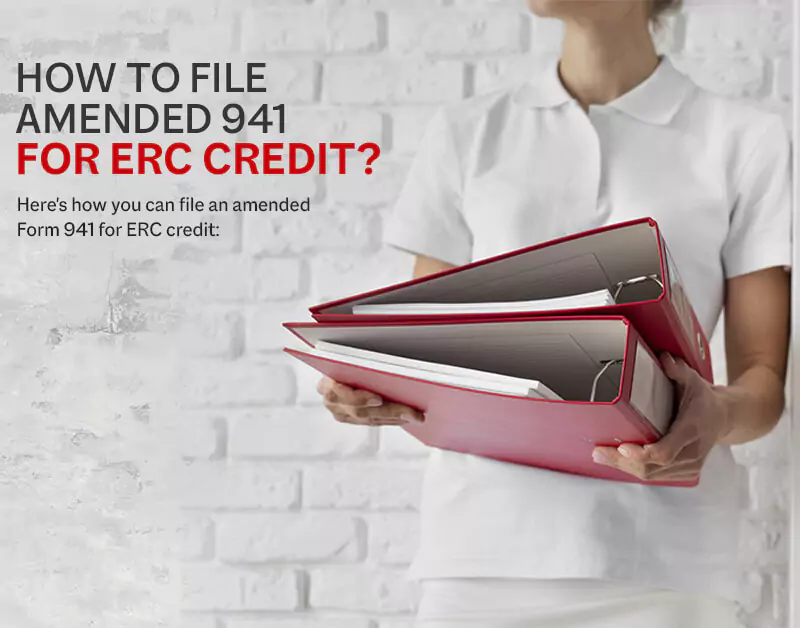
Here’s how you can file an amended Form 941 for ERC credit:
Obtain the necessary forms:
You’ll need a copy to file an amended Form 941. The original Form 941 that you have filed for the relevant quarter(s) and the amended version of Form 941, called Form
941-X.
Complete Form 941-X:
Complete the “Corrected” checkbox at the top of Form 941-X to indicate that you are filing an amended return. Provide the requested information, including the employer identification number (EIN), name, address, and the quarter(s) you are amending.
Make ERC-related adjustments:
In part 1 of Form 941-X, make the necessary adjustments to the wages, tips, and other compensation, as well as the federal income tax withheld, Social Security tax, and Medicare tax. These adjustments should reflect the additional ERC amounts you are claiming.
Calculate the net tax liability:
Calculate the net tax liability for each quarter by subtracting the ERC amounts from the previously reported tax liabilities. If the result is less than 0 (or negative), it may be eligible for a refund or can be used as a credit for other/future liabilities.
Provide an explanation:
In part 3 of Form 941-X, explain the changes and reasons for filing the amended return. Clearly state that you are claiming the ERC for the specific quarters and provide any supporting documentation, if required.
Complete the signature section:
Sign and date Form 941-X as the employer and as the paid preparer, if applicable.
Submit the amended return:
Make a copy of the completed Form 941-X for your records and mail it to the appropriate IRS address in the instructions. You should send it via certified mail with a return receipt to ensure delivery confirmation.
What Is the Difference Between Form 941 and Form 941-X?
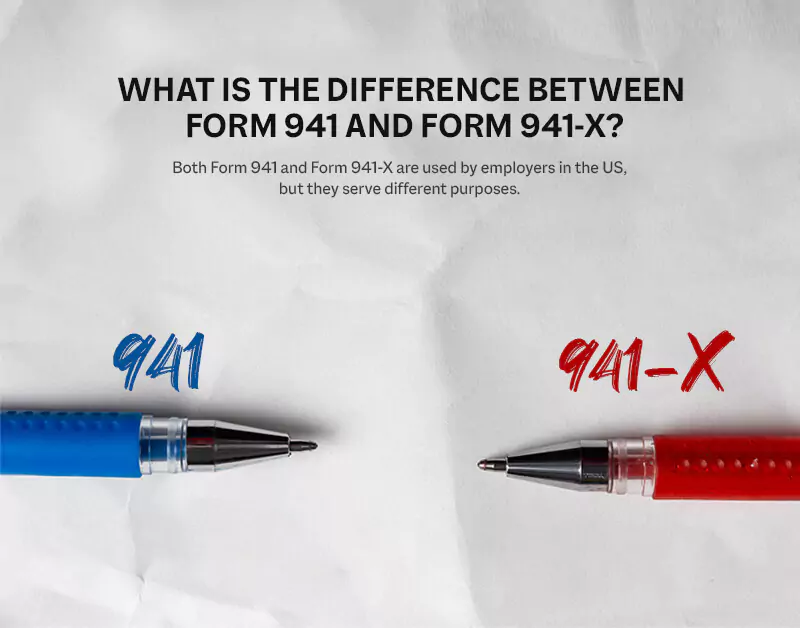
Both Form 941 and Form 941-X are used by employers in the US, but they serve different purposes.
Form 941:
It is the employer’s quarterly Federal Tax Return. It is used to report employment taxes, such as federal income tax withholding, Social Security tax, and Medicare tax, to the Internal Revenue Service (IRS). Employers are required to file Form 941 quarterly to report the wages paid to the employees and the corresponding tax liabilities.
Form 941-X:
It is the adjusted employer’s quarterly federal tax return or claim for a refund. It is used to correct errors or adjust previously filed Form 941. Employers file form 941-X when they need information correction, such as wages, tax, liabilities, or credits claimed on a previously filed From 941.
In short, Form 941 is used for regularly reporting employment taxes every quarter, while Form 941-X is specifically used for making corrections or adjustments to previously filed Form 941.
How to fill them?
Filling out Form 941 and Form 941-X involves following specific steps and providing accurate information. Here’s a brief overview of how to fill out each form:
Form 941:
Employer and Business Information:
Enter your employer identification number (EIN), business name, address, and other required details.
Employee Information:
Report the number of employees, wages paid, tips, and other relevant information for the quarter.
Tax Calculation:
Calculate the employment tax liability based on the information provided.
Payment:
If you owe taxes, include the payment with Form 941 or pay electronically.
Certification:
Sign and date the form to certify its accuracy.
Form 941-X:
Identify the Quarter:
Indicate the calendar quarter or year you are amending.
Corrected Information:
Provide the corrected details for each line item that needs adjustment, including wages, taxes, and credits.
Explanation:
Include a clear explanation of why you are correcting.
Calculation:
Calculate the net adjustment by subtracting the original figures from the corrected figures.
Supporting Documentation:
Attach any necessary documentation, such as payroll records or forms, to support the changes made.
Certification:
Sign and date the form to certify its accuracy.
What is Eligibility For the Employee Retention Credit?

Several key factors need to be considered to determine the eligibility for ERC. The factors are:
Business Operations:
Your business must have carried out trade or business operations during the calendar quarter for which the credit is being claimed. The business size does not matter; for-profit and non-profit entities may be eligible.
Partial/Full Suspension:
Eligible employers must have experienced either a partial or a full suspension of their operations due to governmental orders limiting commerce, travel, or group gatherings.
Also, the employers may qualify for ERC if they experience a decline of more than 20% compared to the same quarter in 2019.
Employee Count:
The eligibility criteria for the ERC differ as per the timeframe. For wages paid between March 13, 2020, and December 31, 2020, eligible employers with an average of 100 or fewer full-time employees in 2019 can claim the credit for all wages paid to employees, regardless of whether they worked.
For wages paid in 2021, the threshold is increased to an average of 500 or fewer full-time employees.
Qualified wages:
The credit is available for qualified wages paid to eligible employees. For 2020, the qualified wages include those paid to employees retained during suspension or when gross receipts declined.
For 2021, the definition of qualified wages expands to include wages paid to employees regardless of business suspension or decline in gross receipts.
How Does Employee Retention Credit Affect Tax Returns?
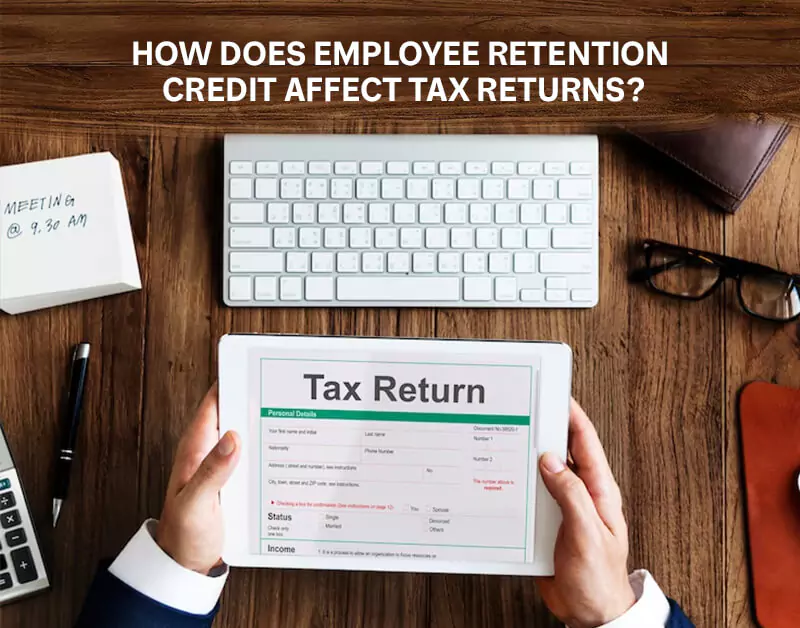
ERC has a significant impact on tax returns. Here’s how it affects your tax return:
Tax Credit:
ERC is a refundable tax credit that offsets certain employment taxes, including federal income tax and the employer’s portion of social security and Medicare taxes.
You get a dollar-to-dollar reduction in the tax liability you owe, and if the credit exceeds your tax liability, the rest can be refunded to you.
Tax Savings:
Eligible employers can save a substantial amount of their tax bill by claiming ERC. The credit can be as high as 70% of qualified wages paid to eligible employees, up to a maximum of $10,000 per employee per quarter in 2021 (previously $5,000 in 2020).
This can result in significant tax savings that can help offset the financial hurdles faced during the COVID-19 pandemic.
Payroll Tax Deposits:
ERC also affects your payroll tax deposits. If you are eligible for the credit, and it exceeds your current tax liabilities, you can reduce the federal employment tax deposits accordingly. This can help you have immediate cash flow benefits by allowing you to retain more funds within your business.
Amended Returns:
If you did not claim the ERC in previous quarters but later found out you were eligible, you can file an amended return, such as Form 941-X, to claim the credit retroactively. Amending your return allows you to receive the credit for the applicable quarters and a refund for any excess credits.
How To Report ERC On Tax Return 1120s?
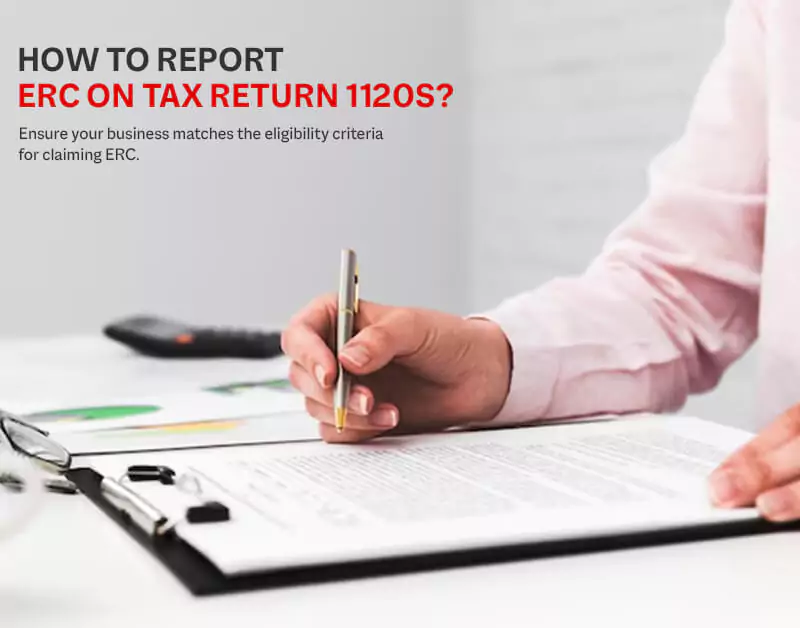
Determine eligibility:
Ensure your business matches the eligibility criteria for claiming ERC. This includes experiencing a significant decline in gross receipts or being subject to a full or partial suspension of operations due to COVID-19.
Calculate the Credit:
Calculate the ERC amount based on the qualified wages paid to the eligible employees during the eligible quarters. The credit could be up to 70% of the qualified wages, with a maximum of $10,000 per employee per quarter in 2021 (previously $5,000 in 2020).
Complete Form 941:
File Form 947 for each quarter to report payroll taxes, including the ERC. Accurately report the ERC amount on Line 11c of Form 941 for the applicable quarters.
Report on Form 1120S:
Form 1120S, the tax return for S corporations, reports the total ERC amount on Schedule K, Line 13d. This amount represents the total ERC claimed for the tax year.
Consult with a Tax Professional:
It is advisable to seek guidance from a tax professional or accountant familiar with tax regulations which can assist you in accurately reporting the ERC on your Form 1120S. They can help ensure compliance with IRS guidelines and optimize the benefits of the credit.
How To Report ERC On Tax Return?
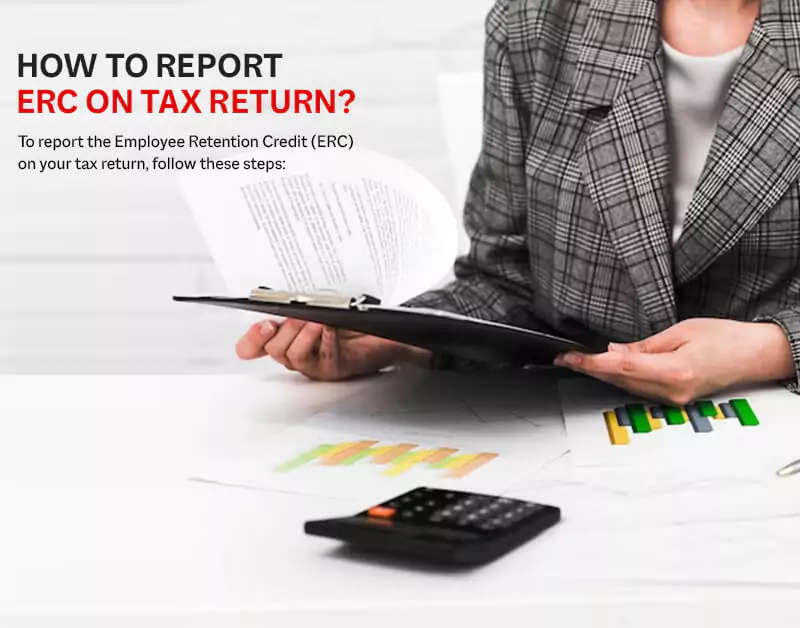
To report the Employee Retention Credit (ERC) on your tax return, follow these steps:
- Calculate the credit based on qualified wages.
- Complete Form 941 for employers or the appropriate tax form for business entities.
- Report the credit on individual tax returns if eligible.
- Keep thorough documentation to support eligibility and wage calculations.
- Consider consulting a tax professional for personalized guidance.
Note: This is a summary. Consult IRS guidelines or a tax professional for detailed instructions tailored to your situation.
What Are The Administrative Adjustment Requests For Employee Retention Credit?

Administrative Adjustment Requests (AARs) for the ERC allow eligible taxpayers to make retroactive changes to claim or increase the credit on previously filed tax returns:
- AARs for ERC are available for taxpayers filing Form 941 or other applicable employment tax returns.
- To make an AAR for ERC, you must file Form 941-X, Adjusted Employer’s Quarterly Federal Tax Return, or Claim for Refund.
- The deadline to file an AAR for ERC is within three years from the date of original Form 941 was filed or two years after the tax was paid.
- When filing an AAR, providing proper documentation to support the adjustments made is crucial.
- Filing an AAR for ERC can be complex, and it’s recommended to seek the assistance of a tax professional knowledgeable in ERC provisions and IRS procedures.
What Are The Best Tips to Amend Form 941 for the ERC?

- Use Form 941-X to make amends in Form 941. This form is specifically designed for making adjustments to previously filed Form 941.
- Complete all the details in Form 941-X accurately.
- Clearly explain the reason for the amendments and provide a detailed description.
- Keep a copy of the amended Form 941-X and all supporting documents for your records.
- Consult a tax professional.
Conclusion
In conclusion, understanding the complexities of the Employee Retention Credit (ERC) and whether you need to amend your tax return for ERC credit is crucial for business owners and individuals. The ERC has provided significant financial support to businesses during the challenging times of the COVID-19 pandemic. If you have already filed your tax return and discovered that you are eligible for the ERC, you may need to file an amended tax return, such as Form 1040-X, to include the credit.

